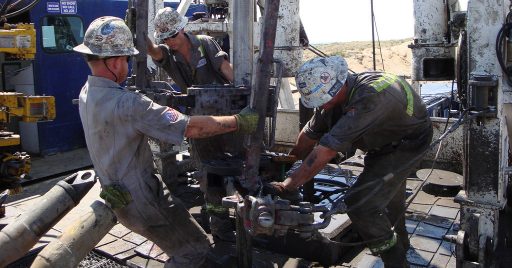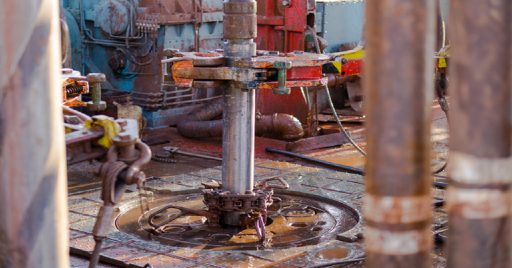Tripping pipe safety is critical to the oil rig industry since stacks of heavy-duty pipes are being handled by humans in and out of the well. Even a minor misplacement of any connection can cause the pipes to get lost and hit workers. Such a fatal tripping pipe accident happened in October 2015 in an offshore mobile drilling unit in the USA. The crew was tripping in the hole, so a stand was being transferred out of the setback area with a HydraRacker, but it got stuck on the fingerboard. The tension of the movement caused the pipe to be released with such a force that it fatally hit one of the workers! The rate of such accidents is high while tripping out/in operations in both offshore and onshore sites!
This article will recommend 7 priorities for tripping pipe safety so HSE professionals can make sure workers are safe during drilling operations in the upstream oil and gas industry.
Table of content
7 priorities for tripping pipe safety
Tripping is when pipes are removed from the well and inserted back due to the need to change a piece of drill string such as the bit. Tripping out is the reverse process of tripping in where elevators are raised and latched to the top of the pipe stand, the pipe is moved to the rotary table, then made up, slips are pulled and set then elevators are unlatched. These steps are repeated for each pipe stand; then, Kelly is attached to the drill string, and drilling is resumed.
To maximize tripping pipe safety, the focus of the team should be on the following 7 priorities:
1. No entry to red zones
The rotary table is a no-go zone when it comes to standing for operation. So, workers should stand on the rotary guard and not the rotary itself. Also, keep the setback area clear of personnel as pipes are being moved to the rotary area. The swing path of the elevator and tong is also dangerous zones that must be clear at all times.
2. Using appropriate PPE
PPE is the most critical piece of equipment that can maximize safety during tripping in/out operations. Among them, gloves are probably the most necessary for pipe handling, so make sure the most recent and preferably high-tech gloves are supplied for the job to avoid pinched fingers and damaged skin.
Goggles, hard hats and steel toe boots are also essential for tripping pipe safety, along with a proper uniform that is not loose-fitting. Not only do they protect against pipes, but they also cover the skin and eyes to avoid being brunt with excess mud that might be splashed while breaking out the Kelly.
Floor mats are also essential to make the footing surface anti-slip because slip and fall are the most common accidents on oil rigs that lead to severe injuries.

3. keeping a proper ergonomic posture
Ergonomic postures are key contributors to safety for workers as bad postures can put pressure on the wrong body part or even cause loss of control and consequent trip and fall. Muscle strains and lower back injuries are the results of such wrong postures.
Lifting techniques are the most helpful for tripping pipe safety as workers are dealing with heavy-duty iron pipes. Proper hand placement is also essential, especially when attaching elevator links, breaking or making connections, and racking back stands.
Slip handles should be gripped with palm facing up to protect wrists; then, the mounting procedure should be done according to best practices. Feet should also be kept away from the bottom of pipe stands, so they are not crushed.
4. Making clean housekeeping a habit
Make clean housekeeping a habit for all workers to avoid trips and falls. This practice includes picking up tools and small objects from the ground and keeping the floor and footing surfaces as dry as possible.
Equipment is as critical as human behavior when it comes to accidents on drilling rigs. So, tong jaws and elevator should be well lubricated, and tong pins should be in place with nuts and bolts while tong dies are sharp and intact.
Opening and closing of fingerboard latches should be checked systematically, and a mud bucket should be used to collect excess mud and avoid spills on the floor.

6. Scheduling adequate rest time
The mental and physical state of the workers has a massive impact on their safety performance that can be optimized by adequate sleep, frequent breaks, proper hydration, and a nutritious diet. The crew should always be mentally alert and physically ready to start a new shift.
7. Supporting team effort
Teamwork is the key to tripping pipe safety as workers can keep each other’s back and prevent fatal accidents when they notice a fatigue-driven mistake or unusual behavior in their colleagues.
Conclusion
Tripping pipe safety should be maximized to protect workers from accidents that are common around the rotary table. There are 7 priorities everyone on the rig can focus on:
- Entry control to red zones.
- Using proper PPE.
- Holding correct postures.
- Keeping housekeeping clean.
- Inspecting equipment before tripping in/out operations.
- Adequate resting.
- Supportive teamwork than anything else.
An intelligent tool can also shift pipe safety toward an optimal state by incorporating artificial intelligence and all its machine learning and data analytics capabilities. This innovative HSE management solution can change the game when it comes to tripping in/out operations by predictive & preventive analytics, pre-defined scenarios, and real-time operations monitoring.